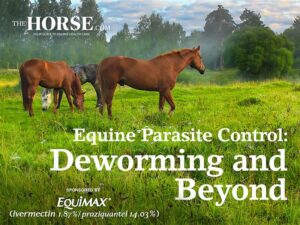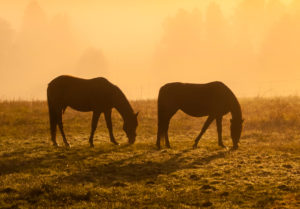Most Horses With Inflammatory Airway Disease Exposed to Fungi

“These airway problems are underdiagnosed, and we should be more aware of how important the environment is for the health and performance of our horses,” she said.
Van Erck-Westergren and colleagues evaluated 731 sport horses, averaging 8 years old, referred to her practice for breathing difficulties, poor performance, or routine exams. In each case, the clinicians performed an airway endoscopy, a tracheal wash (flushing saline into the windpipe and drawing the “wash” back up with a syringe to evaluate respiratory secretions), and a brochoalveolar lavage (injecting sterile fluid into a horse’s lung before drawing it back out again to look for signs of inflammation) and asked the owners questions about their horses’ food and bedding.
They diagnosed 88% of the horses with IAD, she said. Of those, 81% had fungal elements visible in the tracheal wash; the tracheal wash was the most reliable method for detecting fungal particles in her study, she added. The team also found that horses with fungal elements in the tracheal wash were more than twice as likely to have IAD than those without
Create a free account with TheHorse.com to view this content.
TheHorse.com is home to thousands of free articles about horse health care. In order to access some of our exclusive free content, you must be signed into TheHorse.com.
Start your free account today!
Already have an account?
and continue reading.

Related Articles
Stay on top of the most recent Horse Health news with


















